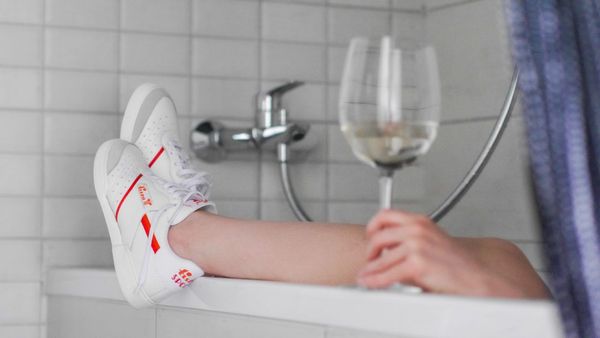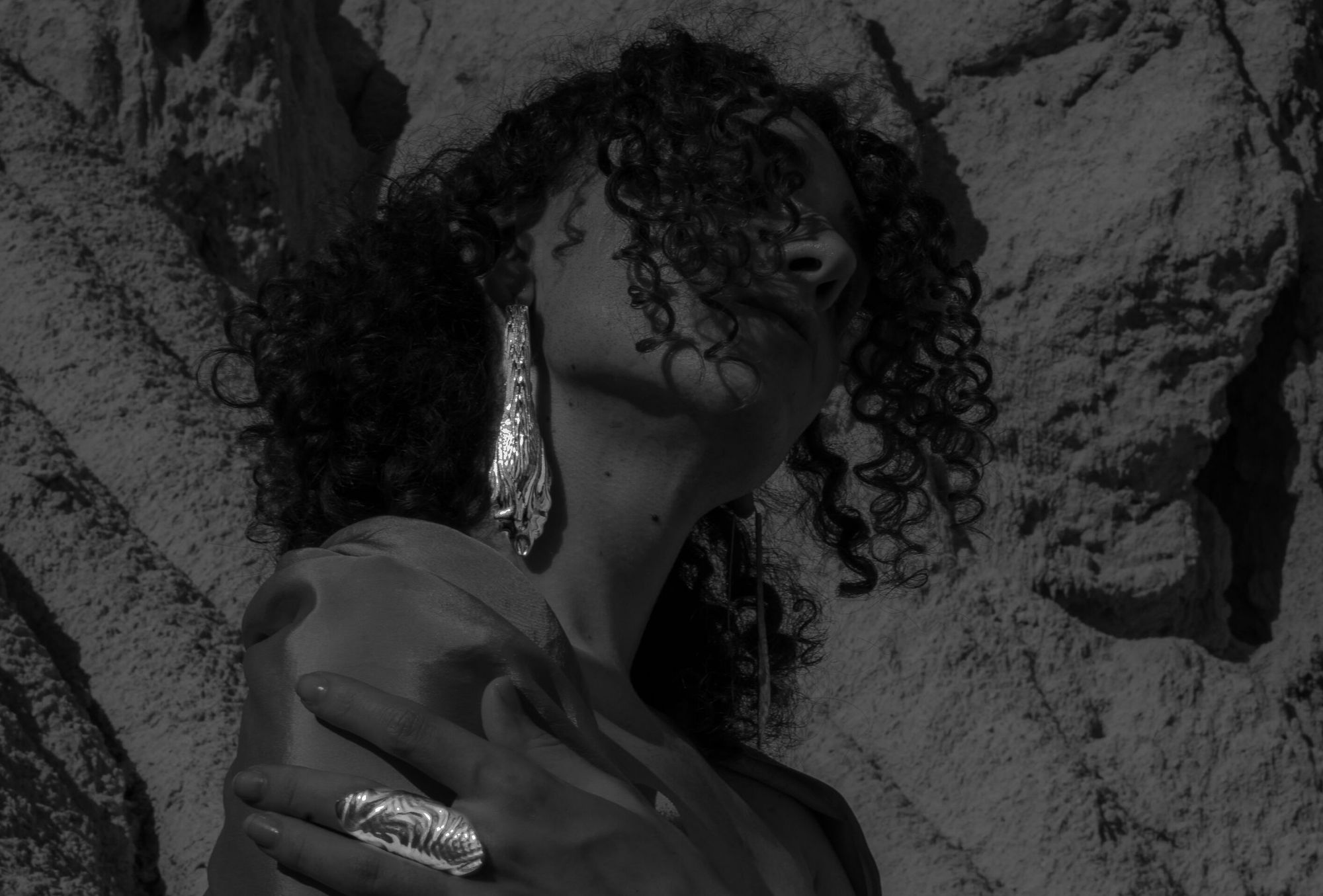Ágoston Balázs Kiss brings the world of objects and software together with his parametric jewelry. His futuristic pieces, made in collaboration with fashion designer Kata Szegedi, were last showcased in Milan.
Balázs has been working in 3D design for six years now, and understanding the software is what interested him the most in this context. “I keep experimenting with shapes, structures, systems, and this is where my objects come from. By integrating emergent technologies, the design possibilities expand, and things are created that could not have been created before. That’s why I think it’s important to be constantly open to new media,” says the designer, who basically takes abstract, intangible algorithms and turns them into wearable objects.


Parametric design is an answering process to a question: algorithms allow the expression of parameters and rules that together clarify the relationship between the design intent and the design answer. While the relationship between elements is used to inform and manipulate complex geometries and structures, a new complex structure can be created without having to start from scratch by changing each link in the chain. Even before the internet, there were progressive designers who reinterpreted the physical world in similar ways. The Catalan architect Antoni Gaudí is credited with one of the earliest analog examples of parametric design: when designing the Sagrada Família, he created a model of ropes and weights to construct the complicated vaulted ceilings and vaults. By varying the position of the weights and the length of the strings, he experimented with the shape of each arch, allowing him to see how small changes would affect the connected elements and the bigger picture. Balázs’s work links us back to the method of Gaudí in the age of digitalism.
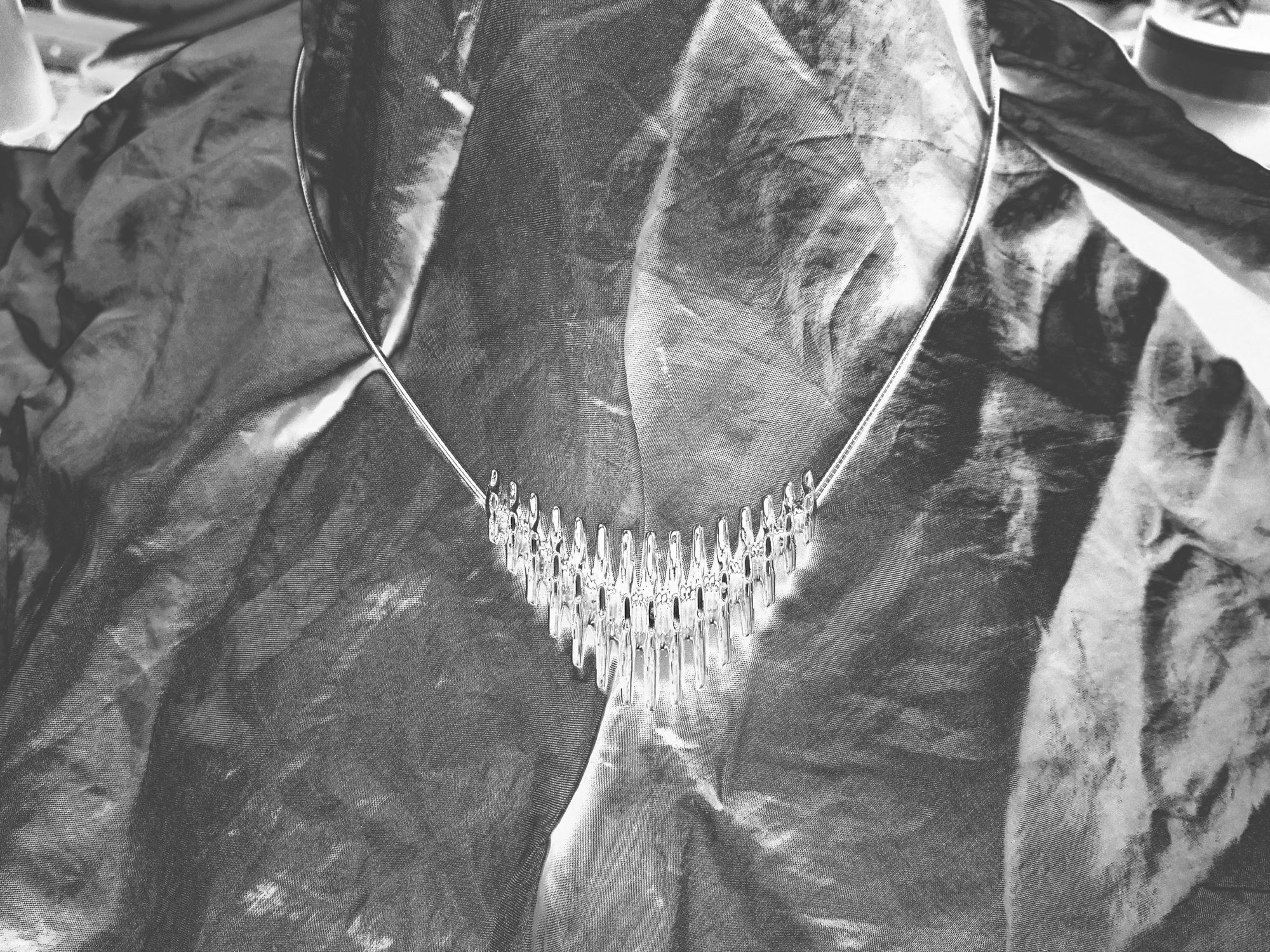
His jewelry is usually inspired by organic shapes, but sometimes only the end result evokes them. So while the use of new technologies does indeed create shapes that never existed before, they still echo the most basic natural forms. They are far removed from reality while existing in an unbreakable relationship with it, always carrying some familiar association.
At the heart of his first digital jewelry, for example, lies the structure of the human spinal column and its manipulated versions. He digitally modeled a 3D scanned vertebra, then 3D printed the resulting shapes, and finally worked the material using mechanical methods.
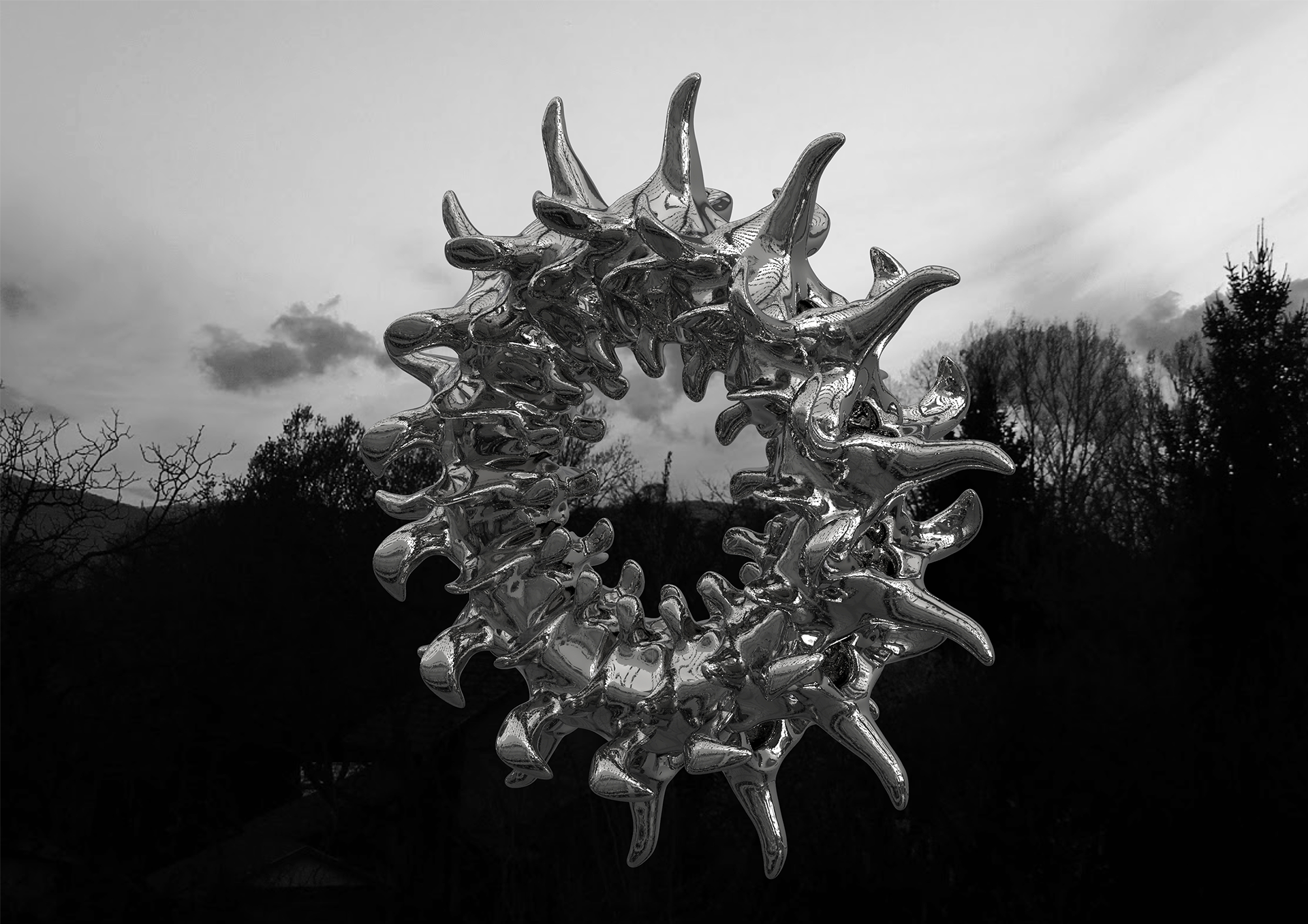

In his collaboration with fashion designer Kata Szegedi, he created jewelry for Kata’s clothes. According to Balázs, they were in close contact but worked in parallel: they tuned the aesthetics rather than the base. The jewels are based on a wave simulation created in 3D space, which reproduced and projected the intricate structure of the water ripples onto the objects. They were then materialized in silver or resin and given their final form by traditional workmanship through a continuous collision of the virtual and physical plains. Although Balázs continues to design his own jewelry collections and is open to collaborations with the fashion industry, he would not define his work as fashion jewelry. They are more fluid and broader parametric experiments, only one aspect of which is that they are wearable.
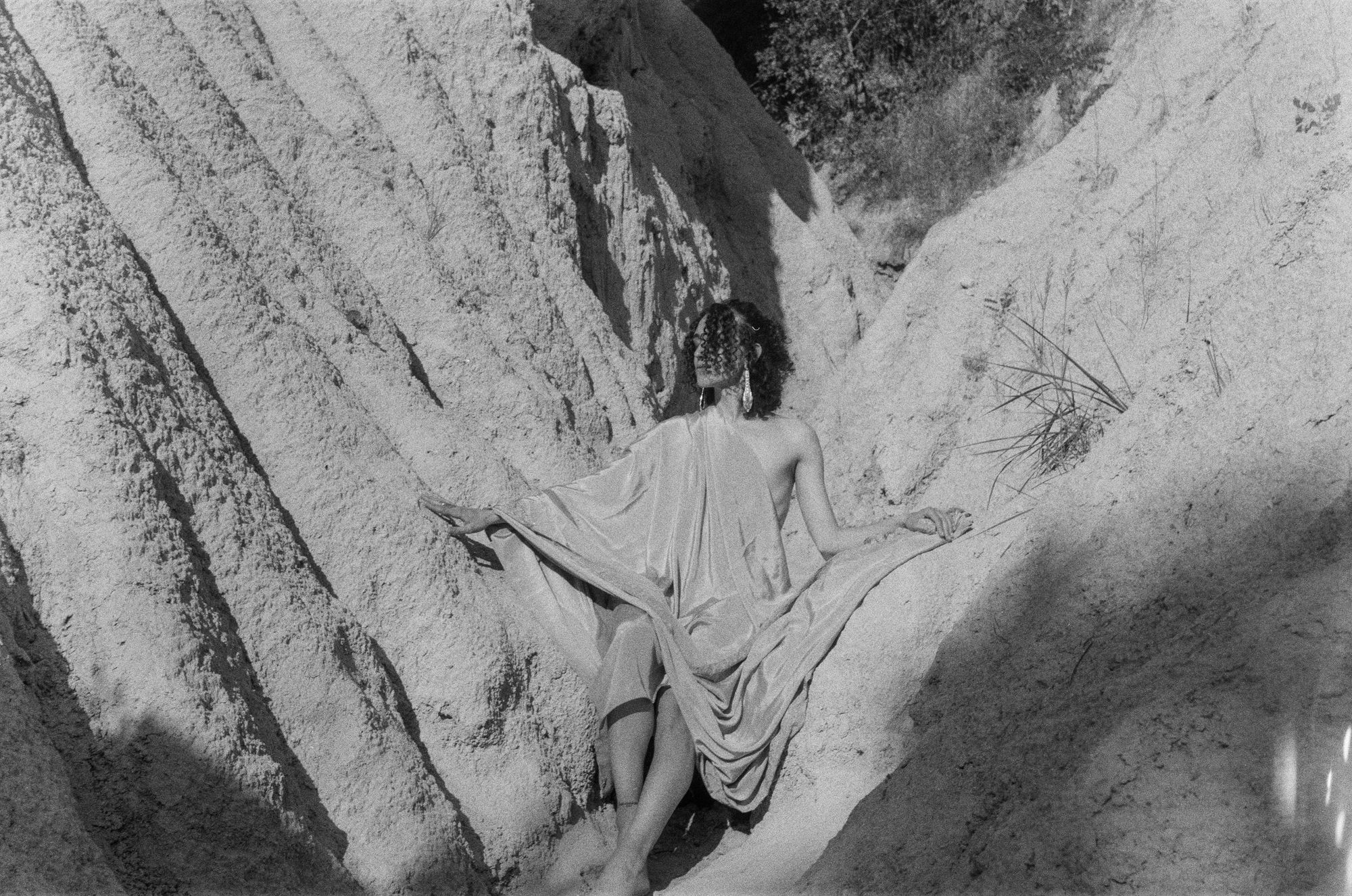
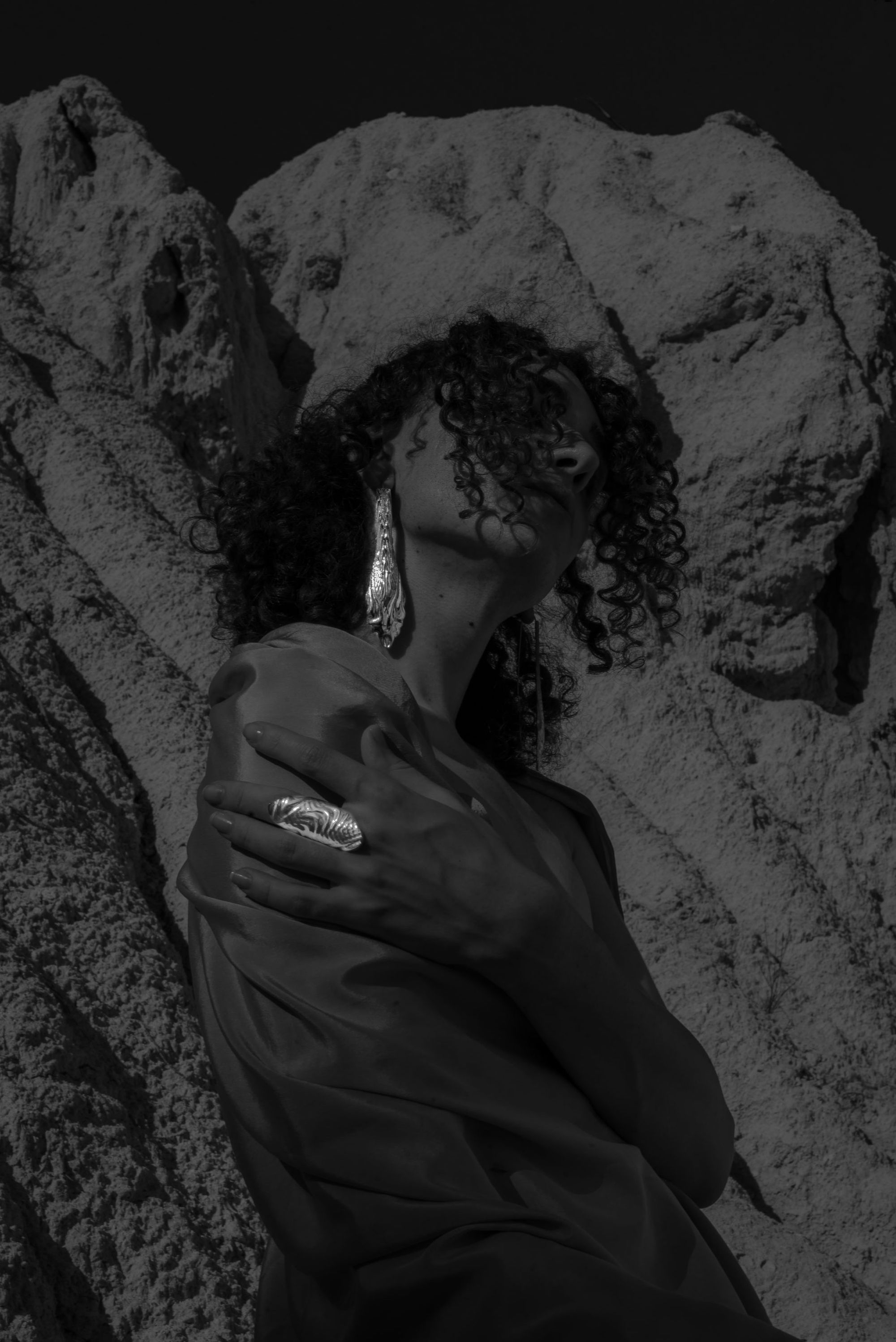
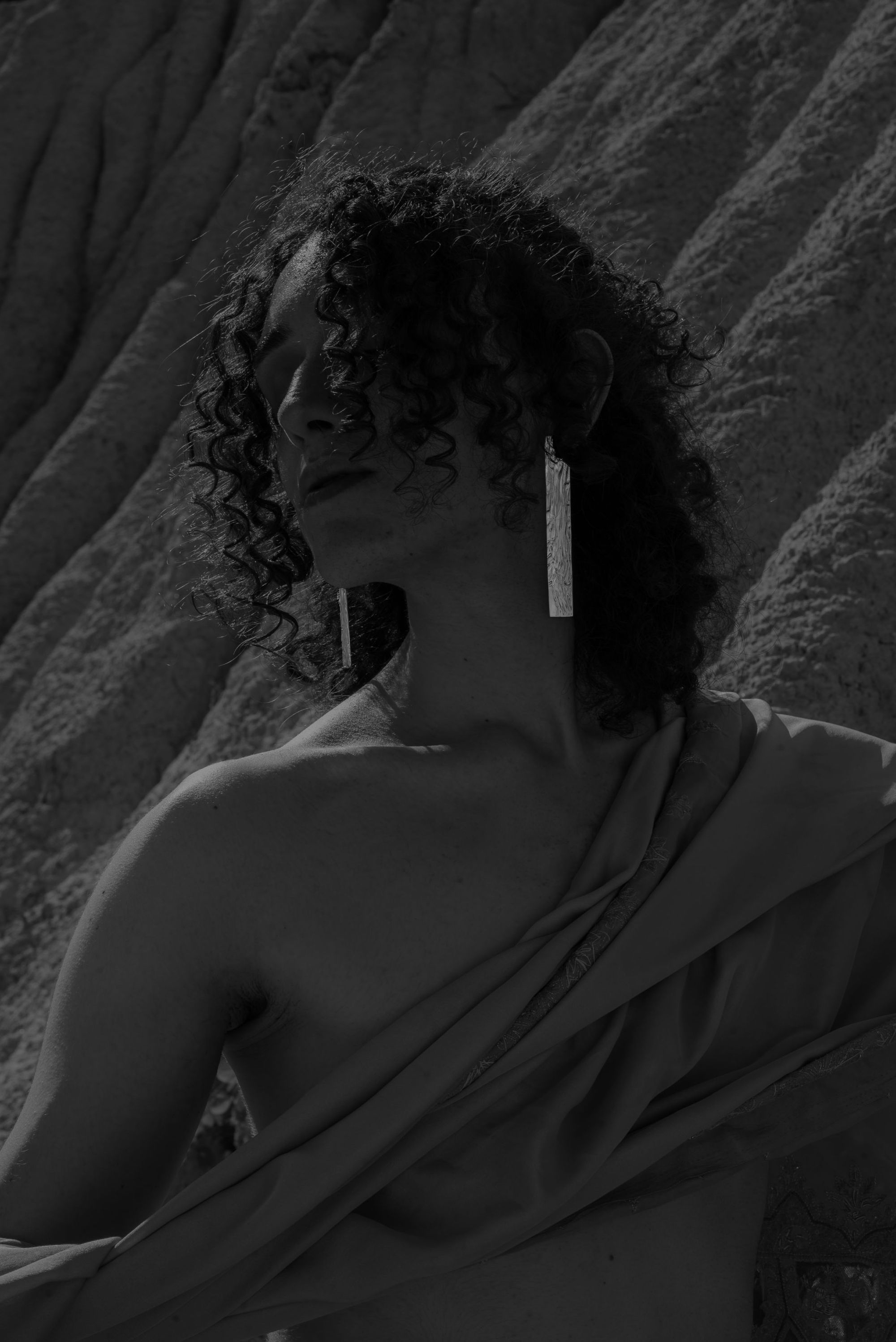
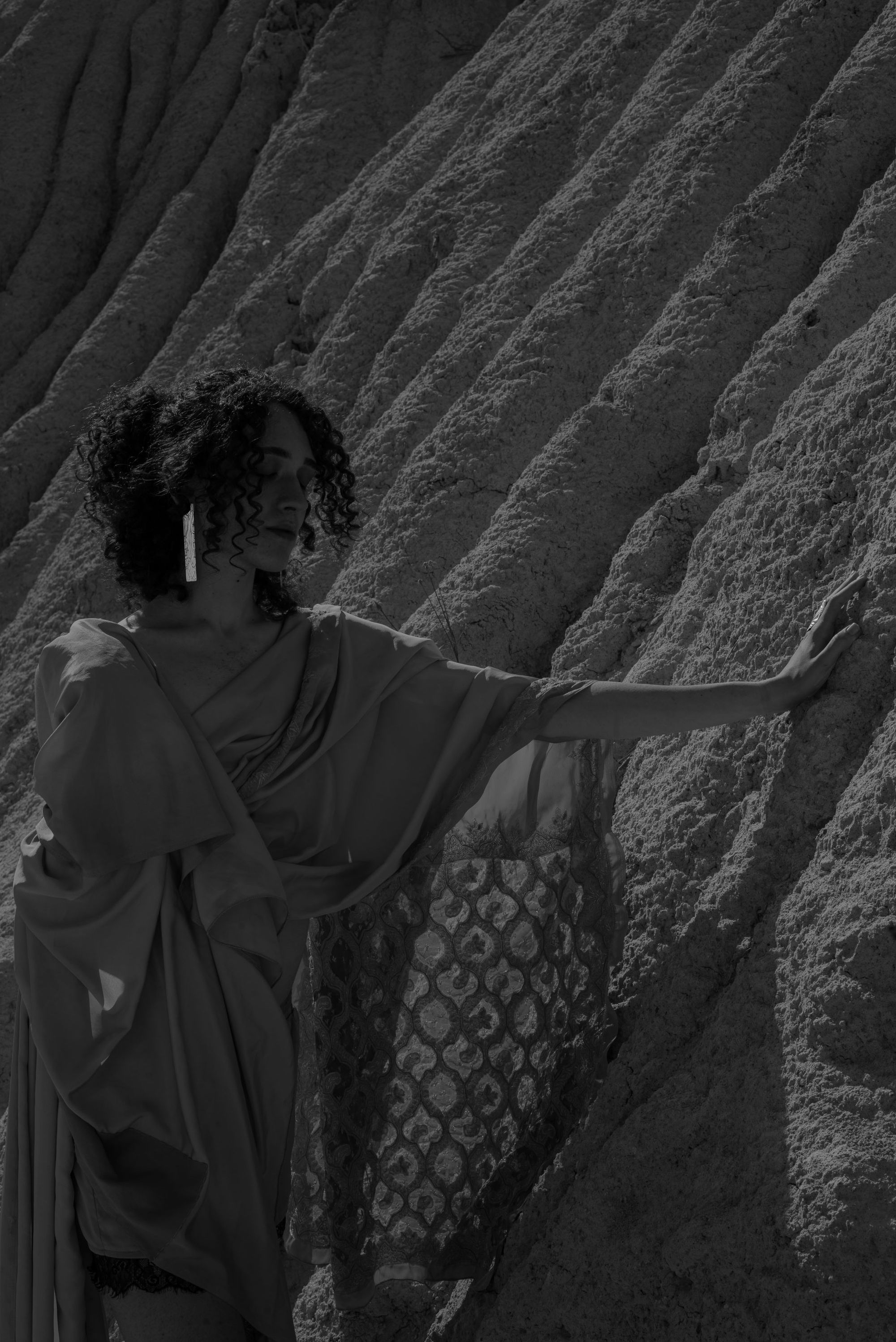
Ágoston Balázs Kiss | Web | Instagram
Photo: Veres Noémi

Even skyscrapers have something new to offer
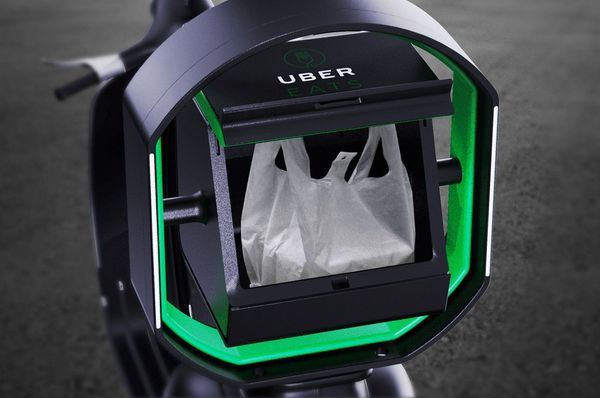
Bye-bye, spilled food—Uber solves the most annoying delivery problem
